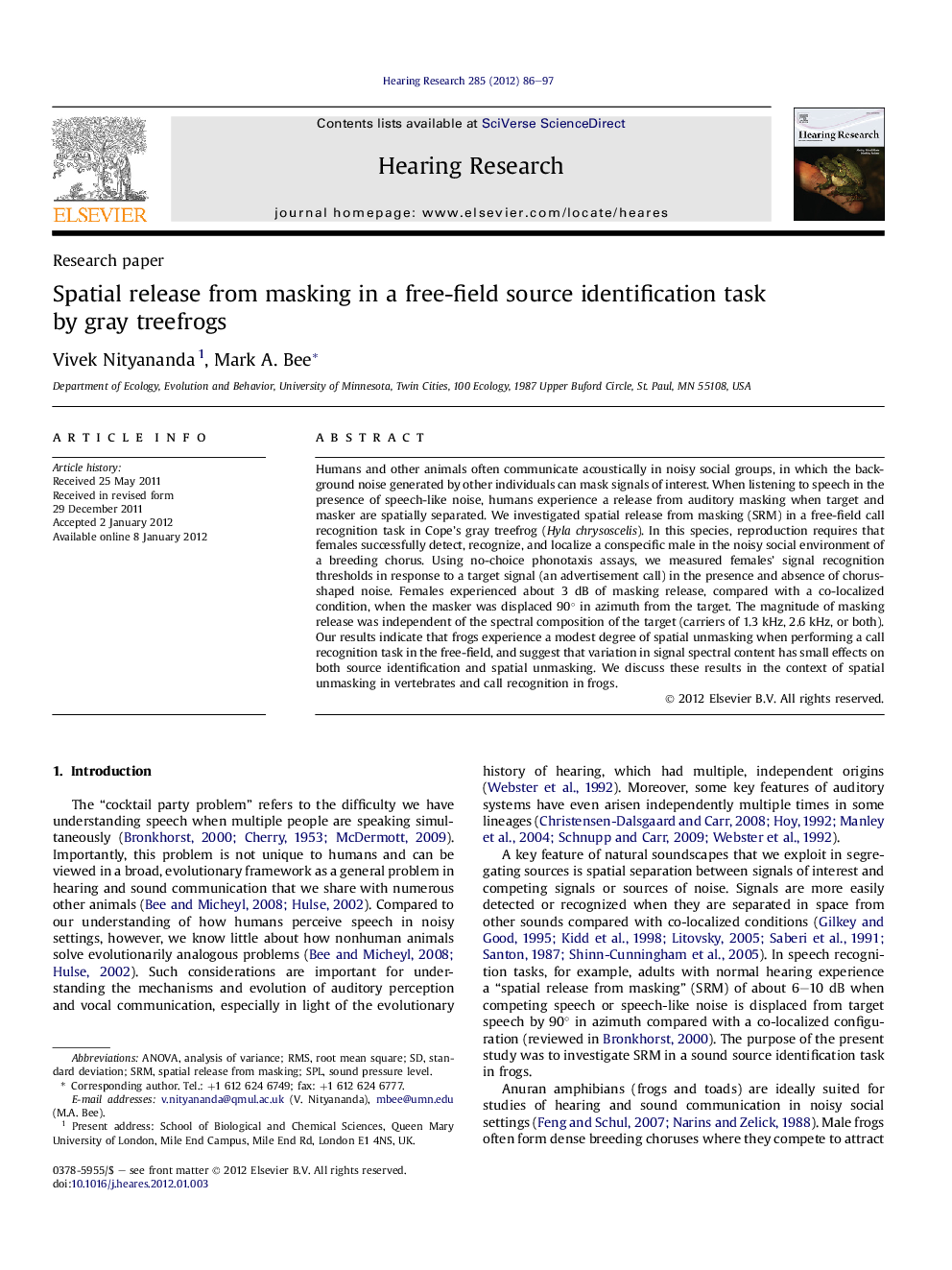| Article ID | Journal | Published Year | Pages | File Type |
|---|---|---|---|---|
| 4355403 | Hearing Research | 2012 | 12 Pages |
Humans and other animals often communicate acoustically in noisy social groups, in which the background noise generated by other individuals can mask signals of interest. When listening to speech in the presence of speech-like noise, humans experience a release from auditory masking when target and masker are spatially separated. We investigated spatial release from masking (SRM) in a free-field call recognition task in Cope’s gray treefrog (Hyla chrysoscelis). In this species, reproduction requires that females successfully detect, recognize, and localize a conspecific male in the noisy social environment of a breeding chorus. Using no-choice phonotaxis assays, we measured females’ signal recognition thresholds in response to a target signal (an advertisement call) in the presence and absence of chorus-shaped noise. Females experienced about 3 dB of masking release, compared with a co-localized condition, when the masker was displaced 90° in azimuth from the target. The magnitude of masking release was independent of the spectral composition of the target (carriers of 1.3 kHz, 2.6 kHz, or both). Our results indicate that frogs experience a modest degree of spatial unmasking when performing a call recognition task in the free-field, and suggest that variation in signal spectral content has small effects on both source identification and spatial unmasking. We discuss these results in the context of spatial unmasking in vertebrates and call recognition in frogs.
► We tested hypotheses about call recognition and spatial unmasking in treefrogs. ► We investigated the role of spectral composition of signals. ► Subjects were tested in co-localized and 90° separated configurations. ► Signal recognition thresholds were 3 dB lower in the separated configuration. ► Spectral composition had little or no effect on recognition and masking release.
